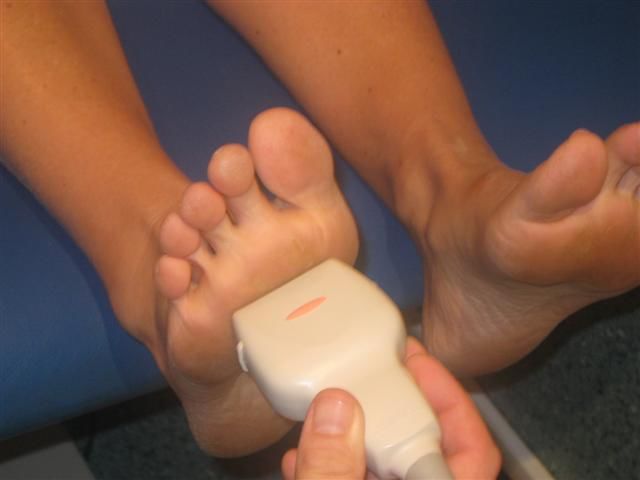Other Ultrasound
Using Ultrasound in Podiatry
By now, it’s no secret that ultrasound can be used in a variety of medical fields. Just a quick web search will show that it is used in specialty areas such as anesthesiology, pain management, thyroidectomies and many others due to the precision and versatility if offers to physicians. So, it is not truly a surprise to find that it is also being used in the field of podiatry.
When it comes to taking care of one feet and any pains or injury associated with them, getting the best information and having a plan for care that works is important – especially when one thinks about how many of our daily activities require us to be on our feet! Thankfully, ultrasonography (sometimes referred to as musculoskeletal ultrasound) is a powerful diagnostic tool that can be used for foot concerns and disorders such as soft tissue masses, Morton’s neuroma, foreign bodies or growth, bursitis, ligament issues, tendonitis, heel spurs, identifying cysts, muscle injuries, nerve damage, joint problems, and tarsal tunnel syndrome – to name just a few.
Because ultrasound works using sound waves rather than invasive measures, a podiatrist is able to identify what is going on within one’s foot and then determine a plan of approach. Better yet, it can be performed regardless of pregnancy, having a pacemaker, or any other medical concerns that would make an MRI or CT scan dangerous. The ultrasound exam can take as much as 45 minutes and is typically done by using a handheld Doppler to determine the cause of the pain, making it available to be used in a variety of scenarios.
So, what are the advantages of using ultrasound technology in your podiatry practice? Here are just a few:
· Completely safe for all those involved, regardless of one’s medical condition or whether or not the patient has any metal implants. Even better, unlike procedures such as MRIs where a patient may stress or feel claustrophobic, using ultrasound allows one to relax during the procedure.
· There is a real-time imaging that shows function, anatomy and range of movement.
· No ionizing radiation
· More detailed than an MRI as the ultrasound can show more details in tendon structure – especially helpful when dealing tendonitis!
· There are no harmful side- effects. In fact, Podiatry Today states that ultrasound is one of the safest imaging tools available!
· More affordable than other exam options
· Minimal patient preparation
· Painless – after all, there are no needles or injections!
After much use, the only real negative found in using ultrasound technology in podiatry is that musculoskeletal ultrasound is not designed to see within the bone or joints, in which case other forms of imaging will be needed.
The use of ultrasound technology in a podiatrist office is a wise decision as it means you can provide quicker, more knowledgeable decisions in how to treat a problem – not just the symptoms. If you have questions about implementing a musculoskeletal ultrasound for your office, please give our specialist a call. We would love to hear from you!

